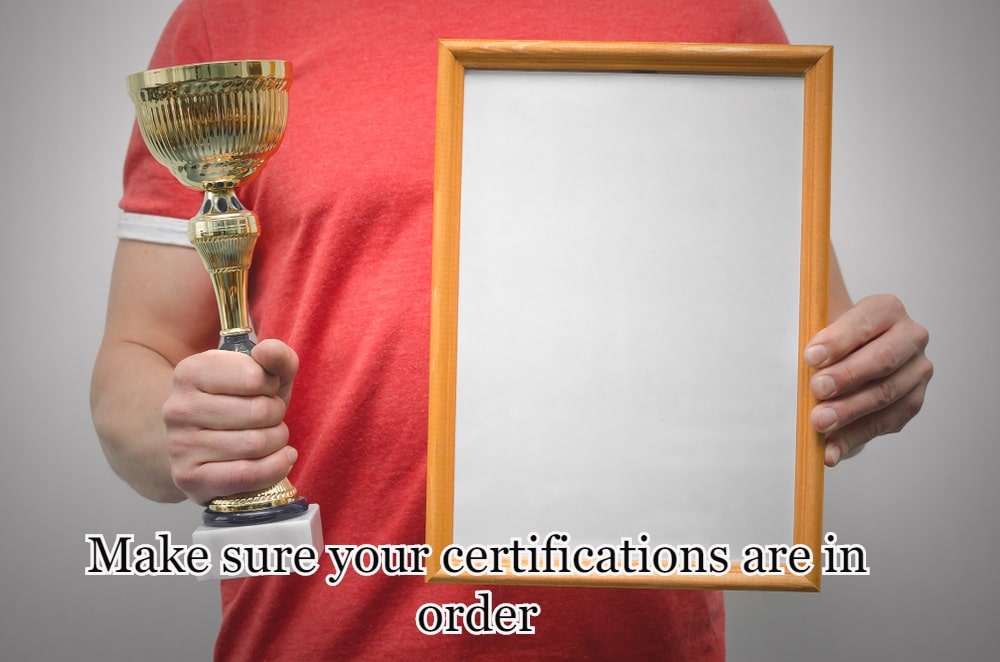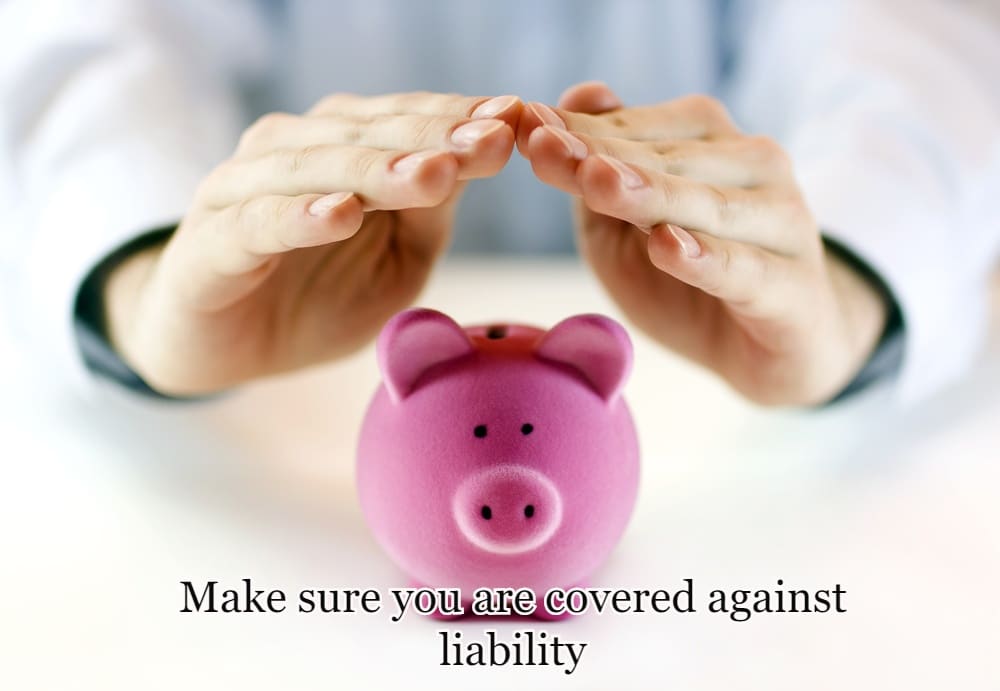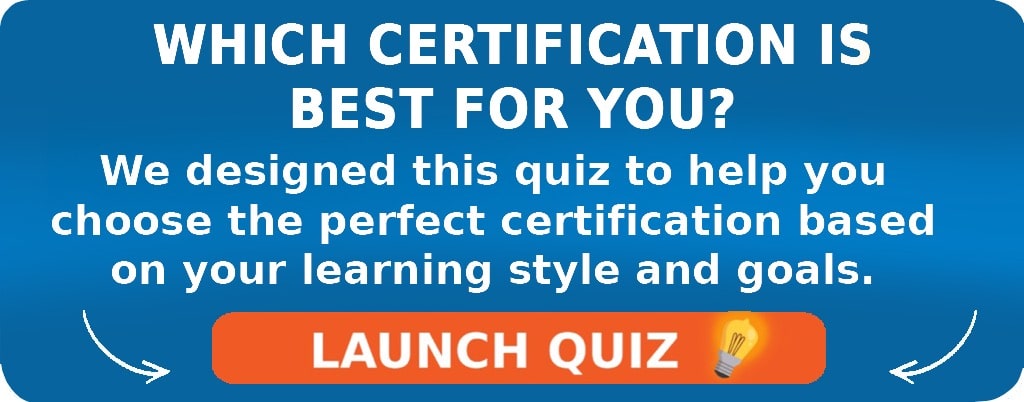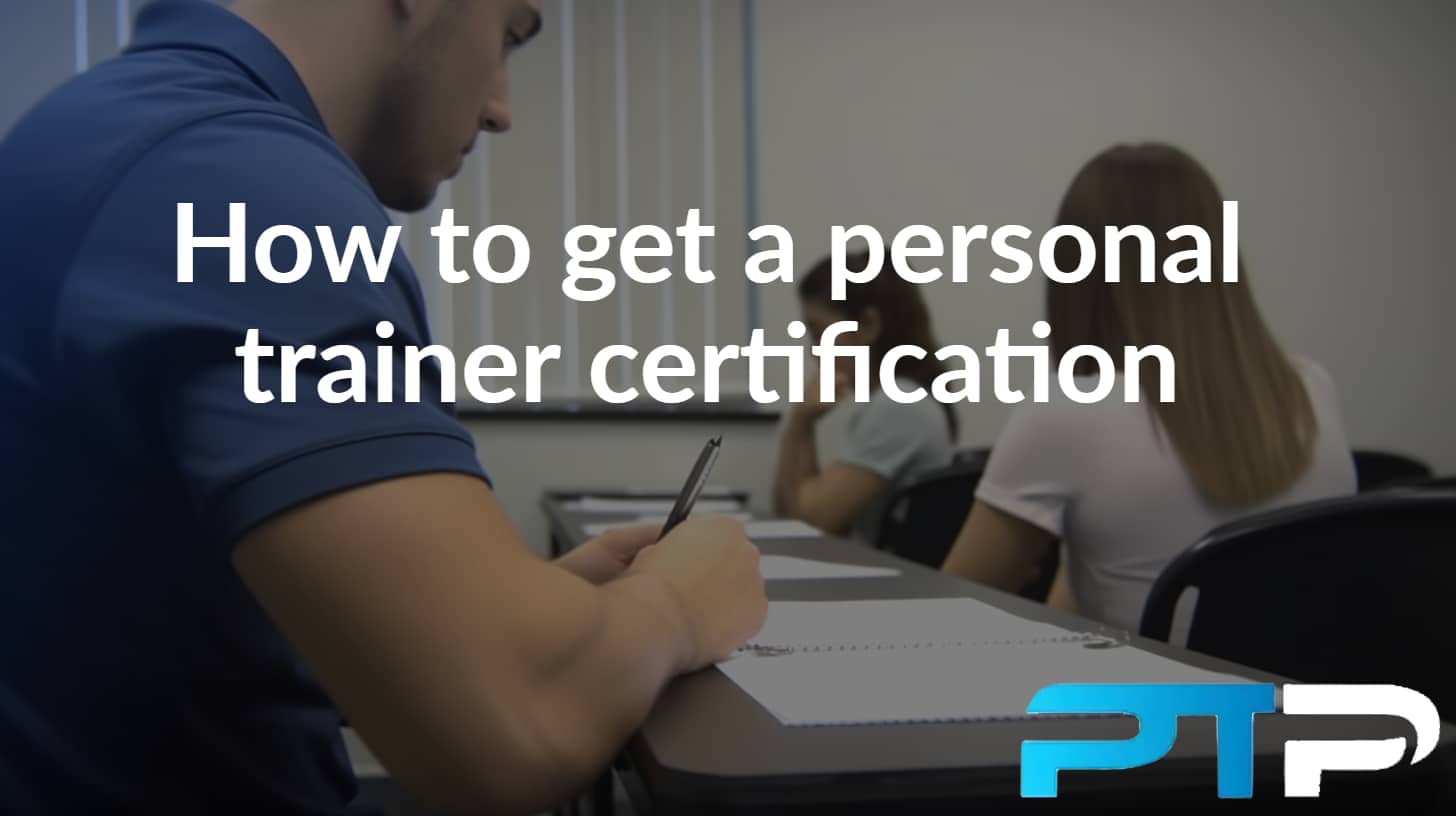
Hey everyone!
As personal trainers, many of us work for other bosses, normally as an employee of a gym, in most cases. However, the ultimate dream is to own your own training business one day, right?
Of course, it is! Who doesn’t want to be their own boss?
The thing is, setting up your own personal trainer business can be a pretty daunting task. For that reason, I thought I would research and write a blog post about the subject, specifically in the form of a checklist of things you need to consider when you reach the point where you want to go alone.
I also highly recommend that you take the quiz and find out which certification is best for your career goals.
Note there are plenty of great bits of information on the web, in-depth pieces with the exact steps you need to follow. This article is more about a few of the crucial things you need to consider and some that you should not miss when setting up your personal trainer gig.
So please read through and hopefully, I have raised some points that will be useful to you when you take that big step!
A Checklist To Successfully Set Up Your Personal Training Business

So let’s jump straight in and go through a checklist of important aspects that you need to consider when starting your personal training business. Please note these are the points that I consider extremely important when doing so, but there are plenty more for you to consider.
So this is by no means the definitive list. It’s up to you to make sure you have absolutely everything covered.
#1 What will you call your business

This is something you probably have had in mind for a long time but without a doubt, it’s important to name your business.
Most personal trainers use their name, for example. Bob Malone, Personal Trainer, but it can be a little more fun and certainly more unique to try to come up with a business name that will make you stand out from the crowd while still indicating what it is that you do.
There are no hard and fast rules regarding a business name. Just don’t try to be too clever about it!
#2 Make sure your certifications are in order

It’s important to ensure that all your certifications are in place and that your CPD/CEC points are up to date to ensure they are valid. While this might seem obvious, it’s easy to lose track of these points and the deadlines when they need to be renewed.
Another important qualification to have, one which you already should have qualified with, is a first aid/CPR/AED certification.
Both of these certifications make you far more marketable as a personal trainer and show that you are an expert in your field. Remember, these certifications will have to be renewed as well.
#3 Consider some form of business training

While you might have all the knowledge as a personal trainer, the business side of things can get a little complicated.
For this reason, many personal trainers take the extra step of getting some form of business training. You don’t need to go to college and study for a business degree, but perhaps find an online business course that can give you a basic guideline on running your business effectively.
You could even do split courses, such as basic bookkeeping, marketing, social media, and others related to running your own business.
#4 Make sure you are covered against liability

Please, I cannot stress this enough. If you are going to be your own boss and run your own personal training business, you no longer fall under an employer. That means you have to ensure that you have some liability insurance.
Do not even take on your first client without some form of insurance in place. Why? Well, in the United States alone, over 460 000 people suffer fitness injuries yearly, according to the U.S. Consumer Safety Product Commission.
And you don’t want these injuries to happen to one of your clients when you don’t have any form of insurance in place. It’s an essential tool in protecting yourself should one of your clients get injured while training and then pins the blame on you.
Exclusive PTP CPT Offers |
||
|---|---|---|
Gold Standard Cert | Most Popular Cert | Best Study Materials |
A Good Option | A Good Option | Best CPT for you?  |
The great thing is that several organizations trusted in the fitness industry, including the American Council on Exercise and the National Academy of Sports Medicine, offer liability and accident insurance for personal trainers.
In fact, I have already covered many of the best options available to you as a personal trainer.
Click here to have a look through them, and remember to sign up for personal liability insurance before you train your first client.
#5 You will need a business tax license

Running your own business brings many new challenges and red tape that needs to be negotiated.
If you were working for an employer, they are tasked with handling your tax contribution, which is taken from your salary. But the onus is now on you if you run your own personal trainer business.
You will also need a business tax license that allows you to take money from paying clients for services rendered by you to them.
And then, throughout the year, you need to note all the income brought in from your personal training services. This allows you to make quarterly tax payments without paying a huge lump sum at the end of the financial year.
Now taxes are something that you might struggle with and in that case, it might make sense to use a professional to help you along, especially starting out. Once you know how it all works, you can handle quarterly tax independently.
#6 Draw up the necessary forms
You will need many forms ready for when you sign up for your first client. These include
- Liability waiver forms
- Health history forms
- Health screen forms
- Fitness assessment forms
These are just some of the relevant examples. You would also need somewhere to store physical forms or keep them electronically if possible. Remember, these have sensitive and confidential information about each of your clients.
#7 What’s your target market?

As a personal trainer going it alone for the first time, have you had the chance to think about the target markets that you want to aim your services at?
Now I bet most of you are saying, “Whoever wants to train with me!” And that’s all good and well, but sometimes, it pays to think a little deeper about this aspect of your business, especially when starting out.
Why?
Well, you already might have a certain niche that you excel at and have developed over time working for an employer. So that might well be the target market you should continue to work towards.
That’s just an example, but remember that your target markets will affect the next part of our checklist.
#8 Develop your marketing strategy

You probably have a good idea of who you would approach to become the first few clients of your business. If you currently work as a personal trainer for a gym or another employer, some of your clients might continue to work with you when you become your own boss.
And while it’s great to have a few potential clients lined up to get you on your way, you will need others, that’s for sure.
So it would help if you had a marketing strategy in place from the start to help increase your client base as quickly as possible. This is something that you will develop over time but at the start, you would need to do the following:
Start your social media accounts

While it’s not imperative to have many social media accounts active, you should at least have one that you can use for social media marketing and building a group of followers.
The best platform to start with is definitely Facebook, so start there. Once you are up and running, you can branch out on the social media side of things. It’s not something that any personal trainer going on their own should ignore, though, that’s for sure.
That’s because social media is one of the best ways for personal trainers to promote their services and show that they are an expert in their field.
Exclusive PTP CPT Offers |
||
|---|---|---|
Gold Standard Cert | Most Popular Cert | Best Study Materials |
A Good Option | A Good Option | Best CPT for you?  |
Get a website
A website is another crucial marketing tool that you cannot afford to be without. And there are several important reasons for this.
A website will help sell your services, show what exactly you can offer a potential client, inform them about your certifications and qualifications, and include all the other information you think a client would need to know regarding what it is you can offer them.
But a website is also an important piece of the puzzle regarding lead generation for new clients. That’s why it should include some contact form, a place where potential clients can fill in their contact details and indicate which area they need help with, for example, weight loss.
A website doesn’t have to be a huge expenditure on your startup budget. Many platforms, such as Wix, allow you to design and host your own website for free. There are also many tutorials on Youtube to guide you in ways to set up a website effectively to help lead generation.
Other marketing material

While a social media presence and a website are marketing platforms you cannot do without, ensure you don’t overlook the more traditional marketing methods.
So that means making sure that you produce the following to help advertise your services:
- Business cards
- Flyers
- Brochures
These can be left at various public spaces such as gyms, hotels, malls, and other retail environments. Get permission first, though!
Email marketing
If you already have built up a contact list of potential clients working as personal trainers before deciding to go it alone, now might be the time to run a small email marketing campaign to inform them that you are starting your own business.
While email marketing campaigns can be pretty involved, this doesn’t need to be.
Perhaps just an introduction, an outline of your plans, a list of the services you offer, and a call to action to contact you by email, social media, or even a link to a contact page on your website.
You could even use these addresses to discount those who signup as your first new clients.
#9 Draw up business rules

Before you set out on this journey, you need to draw up a set of rules that will relate to various aspects of your business and how you will run it.
These are pretty important and should cover the following areas:
- What will your policy be when a client cancels a session? Do they get a refund if they have paid already?
- What happens if a session gets canceled by you?
- Will clients be charged more if they pay late?
- How will you deal with difficult clients?
These are just some ideas; there are others you can think of that relate to experiences you have had with clients. The most important thing is to have these policies and adhere to them.
You will also need to discuss them with new clients as they sign up or perhaps even include them in your marketing material so people can’t say they were unaware of them.
#10 Decide on your pricing

Right, this is one of the most important parts of this checklist.
Pricing is not something you will make up on the fly for each client. Depending on the client’s preferred contract length, you need to know what you will charge. So that means knowing how someone would pay if they were to book:
- Per single session
- Per week (for example, five training sessions)
- Per month (for example, 20 training sessions)
- Per annum (for example, 100 training sessions)
Please note these are just ideas. You will structure packages in a way that suits both you and your clients. You may even prefer to charge per hour.
Various other factors could come into play here. This includes where the client wants to train. So if they want to train at their home, you also need to factor in travel costs and time. 20 minutes traveling to and from a client is 40 minutes you could have spent training someone else. And that might influence how much you charge them.
This certainly is not an exact science. I suggest that you talk to other personal trainers, see how they handle their fees, and build up your strategy from there. Don’t price yourself out of the market, as many clients consider the cost a deciding factor when picking between their personal trainers.
Remember, where you live can also play a huge part in pricing. A personal trainer in New York will certainly charge more than one working in a small, rural town.
#11 Set up a business bank account
While it’s tempting to use your personal bank account, it should have a separate one if you have registered your business. That means you need to set up everything that goes with that.
Other considerations include the following:
- Will you need credit facilities such as a credit card?
- Do you need to set up Internet banking?
- Will you use checks?
- Do you have options for an overdraft if need be?
A separate bank account lets you keep your personal banking from your business banking, so things don’t get muddled up.
#12 How will clients pay?

This is an often-overlooked factor when personal trainers start out. At the same time, it’s easy to say that you will only take cash, which can inconvenience a potential client.
It can also be difficult to track who pays what because you must write down payments physically. That can be overcome by issuing receipts, but let’s be honest, that’s pretty much an approach from decades ago.
I am not saying I don’t use cash as a payment form but if you struggle to keep records, it really can get out of hand.
So, what are the alternatives? Well, there are several options:
- Payments go straight into your business bank account.
- Using online payment platforms like PayPal or Skrill
- Various payment apps available via the Google Play Store or the Apple Store
The more payment options you have, the better for you, in my book. It just offers convenience for your clients, which is not bad, right?
I have already mentioned keeping track of payments, and as a side note, I think it’s important that you devise some system to do so before you sign your first client.
You could even invest in a bookkeeping package to help you in this regard or perhaps use Excel spreadsheets to keep track of everything. Many options are available to you, but its best to know how you will handle tracking payments before you even start.
Nothing could be worse than telling a client they need to pay you when they have already done so and you haven’t kept track of it. You don’t only need to be professional in the training you provide but in every other aspect of business as well!
#13 You need a training venue

What’s a personal trainer without a training venue, right?
A training venue is a critical part of your overall planning, that’s for sure. But it doesn’t always need to be at a gym.
While you might want to use gym equipment as part of your overall training strategy at times, you might even train clients in their homes, train from your home, or even use public recreational spaces like the local park.
Or perhaps you even want to rent a space to turn it into your own gym studio – if you have the capital to do so. Whatever your choice, you have to have somewhere to train your clients!
For most personal trainers starting out, renting space or training time in the local gym is probably your best bet, as it gives you access to various training equipment that can prove costly to purchase on your own.
Last Words…

Phew! That’s a lot of information to digest. And I am sure there are many more things that you can think of that would relate specifically to your unique situation when setting up your personal trainer business.
That said, this checklist has all the most important things that I think you must consider when going out alone. Remember, setting up your own business will take plenty of planning, and beginning with a checklist and building from there is the best place to start, no doubt about it.
And it’s not something that’s going to happen in a week! Set aside a long period to get everything done right, making you more than ready when the first client steps through your door.
At times, it may seem daunting, but once everything is in motion and you are doing what you love, now as your own boss, all that planning, hard work, and stress will be more than worth it!
Good luck!
References
- “Checklist for Starting a Personal Training Business.” National Federation of Professional Trainers (NFPT), https://www.nfpt.com/blog/checklist-starting-personal-training-business.
- “How to Start a Personal Training Business: The Quick Guide.” International Sports Sciences Association (ISSA) Online, https://www.issaonline.com/blog/index.cfm/2019/how-to-start-a-personal-training-business-the-quick-guide.
- “Personal Training Business.” How to Start an LLC, https://howtostartanllc.com/business-ideas/personal-training.
- “Ultimate Personal Trainer Checklist.” Keep On, https://getkeepon.com/ultimate-personal-trainer-checklist/.

 Have a question?
Have a question? 

![Wellness Coach vs Health Coach Career Comparison in [year] 37 health vs wellness coach - a side by side image of a health coach and wellness coach showcasing the differences between each profession](https://www.ptpioneer.com/wp-content/uploads/2024/02/Health-Coach-vs-Wellness-Coach.png)
![Life Coach vs Wellness Coach [year] Career Comparison 38 health vs wellness coach - a side by side image of a health coach and wellness coach showcasing the differences between each profession](https://www.ptpioneer.com/wp-content/uploads/2024/02/wellness-coach-vs-life-coach.png)
![What Is a CPT Certification? + Other CPT Questions [year] 39 What Is a CPT Certification? + Other CPT Questions [year] 5](https://www.ptpioneer.com/wp-content/uploads/2023/09/what-is-a-cpt-certification.jpg)


![Yoga Instructor Career - [year] Salary, Prospects & More 42 Yoga Instructor Career](https://www.ptpioneer.com/wp-content/uploads/2021/08/Yoga-Instructor-Career.jpg)

Tyler Read
PTPioneer Editorial Integrity
All content published on PTPioneer is checked and reviewed extensively by our staff of experienced personal trainers, nutrition coaches, and other Fitness Experts. This is to make sure that the content you are reading is fact-checked for accuracy, contains up-to-date information, and is relevant. We only add trustworthy citations that you can find at the bottom of each article. You can read more about our editorial integrity here.